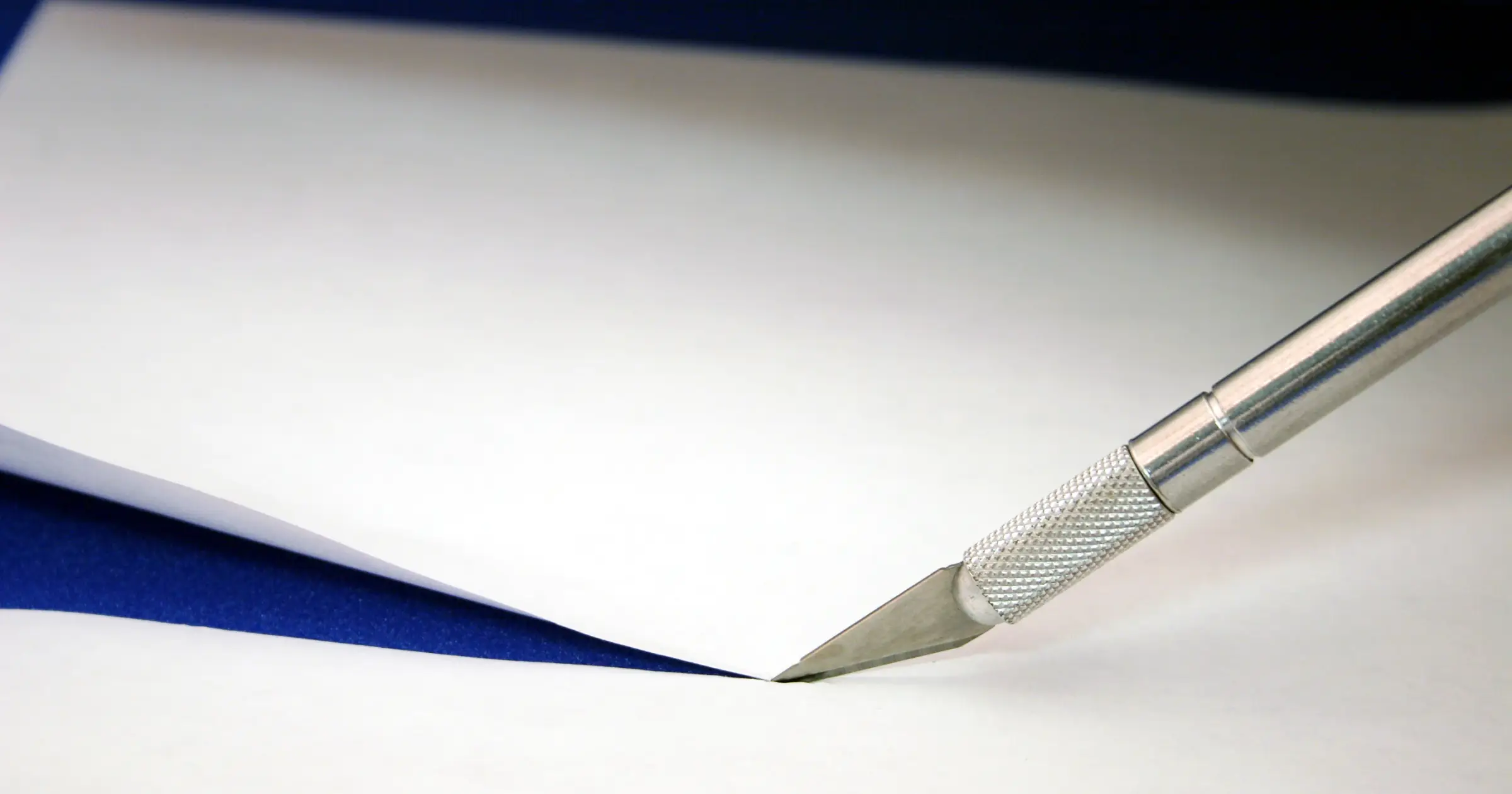Note: This is cross-posted from my marketing blog. It was inspired by Jon Selikoff.
The least useful—yet one of the most important—things I learned in my newspaper days was how to flip a comma on a paste-up board.
A comma flip is when you manually rotate or move apostrophes or quotation marks to make them grammatically correct. It’s a delicate procedure that requires a sharp X-Acto knife, an even sharper eye, and a commitment to doing things in the least practical way possible.
Simply reprinting the copy with corrected punctuation would have been easier, faster, and required fewer Band-Aids. (X-Acto knives are sharp.)
Comma flips were impractical back then; today, they’re as useless as knowing how to respool a cassette with a pencil or untangle a phone cord.1
But Jon Selikoff, the managing editor who taught me how to flip commas, said the difficulty was the point. When you handle the details yourself, you understand better why they matter—and how much the big things depend on getting them right.
It was a lightbulb moment at the light table—a lesson that shaped my approach to, well, everything.
Prove You Care About the Details
Each little detail you get wrong chips away at your credibility. If people see you can’t get the little things right, they’ll question your ability to handle the big things.
I’d like to thank my neighborhood elementary school for providing one of the finest—and funniest—examples of a tiny typo undermining an entire message.

I had my own “literancy” moment years ago when I misspelled someone’s last name—multiple ways—in a single article. The facts were still solid, but no one cared. My reporting was now in doubt.
I’ve rarely made that mistake since.
Flaws Hurt the Flow
Imagine yourself driving to your neighborhood supermarket, singing along to your favorite song and updating your mental grocery list, when—thump!—you hit a speed bump that wasn’t there the day before.
The jolt lasts only a second but snaps you out of your thoughts. You’re no longer singing. You’re not wondering if Oreos are on sale.
Small mistakes in your messaging work the same way. They’re little distractions that jolt your audience away from what you’re trying to say.
Ask yourself if you’ve ever been thrown off by an erroneous punctuation mark or a missing word that completely disrupts the rhythm of the text.
Most readers will sense there’s something wrong with that sentence, even if they can’t name the specific errors.2
Some people are distracted by small inconsistencies in fonts and formatting. I’m often thrown by details in poorly chosen stock images—like promoting your innovative technology with a photo of someone using a laptop that still has a CD drive.
Don’t let details derail your audience. You’ve worked hard to capture their attention; now keep it.

Getting It Right Isn’t About Being Perfect
If my years as an amateur punctuation surgeon taught me anything, it’s not how to flip a comma, but why to.
It’s not about chasing perfection. It’s about understanding that getting the small things right sometimes takes work—and always worth the effort.
In the end, flipping commas was never a skill. It was a mindset.
Footnotes
- Paste-up—manually arranging, pasting, and moving text and design elements on a board—was a nearly dead art when I learned it. Most newspapers replaced it with computerized pagination systems starting in the 1980s. A few small newspapers (including some college papers like mine) kept some elements of paste-up on life support for a surprisingly long time as they slowly transitioned to full digital layout. ↩︎
- Corrected sentence: Ask yourself if you’ve ever been thrown off by an erroneous punctuation mark, or a missing word that disrupts the rhythm of the text. ↩︎

